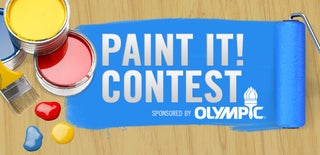Introduction: Conductive Paint
The goal of this experiment was to try to find an alternative to commercially available conductive paint. It is incredible stuff but expensive. I've read other Instructables like Makerboat's $1 Conductive Ink and IceCats' Paper Electronics. They helped me arrive at my own recipe, which uses only two ingredients but I think my testing is more reliable.
To make the winning recipe you need:
- Graphite powder*
- Acrylic paint
- A jar with an airtight seal
To complete every test you need:
- Elmer's Glue-All
- Titebond III Wood Glue
- Acrylic paint
- Wire Glue (tm)
- Graphite powder
- 4 wooden toothpicks
- 4 jars with airtight seals
- Paper
- Ohmmeter
- 2 zip ties
*Be careful with graphite powder because inhalation can lead to respiratory problems.
Step 1: Glue-All and Graphite Sample
For the first recipe graphite powder was mixed with Elmer's Glue-All until the consistency was spreadable. Be careful when adding the glue because squeezing the bottle will shoot a blast of air into the jar and graphite powder will blow everywhere. The third picture illustrates this.
The ratio was:
- 2 parts Elmer's Glue-All
- 1 part graphite powder
The result was fluid but very thick. It could still be used as an adhesive.
Two lines were drawn with the toothpick. One thin line and one thick line. The toothpick was wiped off on the side of the jar and allowed to dry next to the lines.
Step 2: Titebond III and Graphite Sample
The second recipe was Titebond III and graphite powder.
The ratio was :
- 1 part Titebond III
- 1 part graphite powder
The result was fluid but not runny.
Two lines were drawn with the toothpick. One thin line and one thick line. The toothpick was wiped off on the side of the jar and allowed to dry next to the lines.
Step 3: Acrylic Paint and Graphite Sample
The third recipe was acrylic paint and graphite powder.
The ratio was:
- 1 part acrylic paint
- 1 part graphite powder
The result was slightly thicker than paint.
Two lines were drawn with the toothpick. One thin line and one thick line. The toothpick was wiped off on the side of the jar and allowed to dry next to the lines.
Step 4: Control Sample With Wire Glue (tm)
The fourth sample was commercially available Wire Glue (tm) from Think Geek. The Wire Glue(tm) needed to be stirred so another toothpick was used.
The Wire Glue(tm) was much runnier than the other samples so the lines were not as bulky. Less material being put down means a higher resistance since there is less carbon/graphite for conduction.
Two lines were drawn with the toothpick. One thin line and one thick line. The toothpick was wiped off on the side of the jar and allowed to dry next to the lines.
Step 5: Preparation for Testing
All the samples dried for five hours and were labeled.
Close-up pictures were taken to show the thickness of each sample. In order they are:
- Elmer's Glue-All
- Titebond III
- Acrylic paint
- Wire Glue(tm)
To ensure the samples were tested uniformly two zip ties were tightened around ohmmeter test probes. This ensured the probe tips were the same distance for each test.
Step 6: Testing Elmer's Glue-All and Graphite
Each sample of Elmer's Glue-All and graphite was tested with the fixed-width probes and recorded.
Step 7: Testing Titebond III and Graphite
Each sample of Titebond III and graphite was tested with the fixed-width probes and recorded.
Step 8: Testing Acrylic Paint and Graphite
Each sample of acrylic paint and graphite was tested with the fixed-width probes and recorded.
Step 9: Testing Wire Glue(tm)
Each sample of Wire Glue(tm) was tested with the fixed-width probes and recorded.
Step 10: Results
The acrylic paint is the most conductive material in this sample set when painted with a toothpick. The materials are commonly available and inexpensively. The acrylic paint cost $0.78 and the graphite powder cost $0.75. All prices are in US Dollars.
The advantage of the Wire Glue(tm), which has the next highest conductivity, is that it has a lower viscosity so it could potentially be used with custom pen nibs. Store-bought pen nibs were used with the Wire Glue(tm) in a different experiment but it was inconvenient to apply.
This build took me two days and one more to write these instructions.
I run a blog where I talk incessantly about the things I build, including an unabridged version of this project with videos that show the viscosity of the samples. There are other neat things there like a device that lets you hear temperatures and a keyboard you can use from inside your pockets.

Finalist in the
Paint It! Sponsored by Olympic Paint













